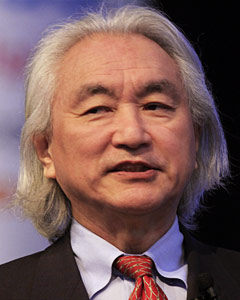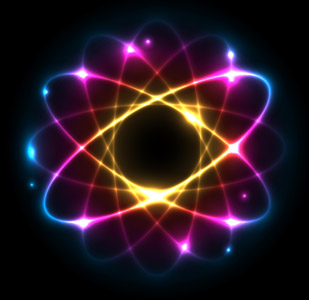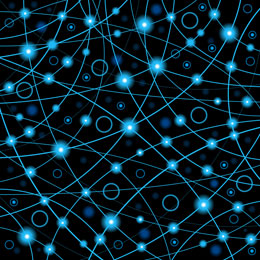
CC BY-SA 2.0
Michio Kaku
1947 - Present
American theoretical physicist, author, and popularizer of science.
Co-founder of the string field theory.
Visiting professor at the Institute of Advanced Study in Princeton and New York University.
Currently working on continuing Einstein's work on a Grand Theory of Everything.
Michio Kaku is an American theoretical physicist, author, and popularizer of science. He was born on January 24, 1947 in San Jose, California to parents of Japanese ancestry. His grandfather came to the United States to participate in the clean-up effort after the 1906 San Francisco earthquake. His father was born in California but was educated in Japan and spoke very little English. During World War II, both of Michio's parents were placed in the Tule Lake War Relocation Center in Modoc County, California. They met while staying at the center. When Michio was growing up, he loved science fiction as well as books and movies that dealt with time travel and parallel universes. He said that magic, fantasy, and science fiction were all a gigantic playground for his imagination. For him, it all began a lifelong love of the impossible. He was eight years old when Albert Einstein died before he could complete his "Grand Theory of Everything". This inspired Michio to learn more about Einstein and his work. All though his family was poor, they supported his curiosity as best they could by letting him build experiments in the house and taking him to university libraries.

Michio attended Cubberly High School in Palo Alto, California. He was an incredibly gifted student. For a school science fair project, he built a particle accelerator in his parent's garage. He said his goal was to generate a beam of gamma rays powerful enough to create antimatter. The deice he built was made of 400 pounds of scrap metal and 22 miles of copper wire. It generated a magnetic field 20,000 times greater than that of the Earth. This ambitious project earned him a spot at the National Science Fair in New Mexico, where it attracted the attention of nuclear physicist Edward Teller. Teller awarded Michio the Hertz Engineering Scholarship to Harvard University. Michio attended Harvard and in 1968 he graduated summa cum laude with a B.S. in physics. He then attended the University of California, Berkley where he earned a Ph.D. in physics in 1972. In 1973, he held a lectureship at Princeton University.
During the Vietnam War, Michio completed his U.S. Army basic training at Fort Benning in Georgia and advanced infantry training at Fort Lewis in Washington. The war ended before he could be deployed as an infantryman. After the war, Michio returned to his research. Einstein had spent the last part of his life trying to find what is known as a "theory of everything". This theory would tie together his theory of general relativity and the theory of quantum mechanics. These two theories are not fully compatible using our current understanding of physics. Einstein died before he could solve the problem. A new theory known as string theory combines the two theories by assuming there are multiple universes and dimensions beyond the ones we know. String theory theorizes that all of the elementary particles in the universe are composed of tiny, vibrating strings. In 1974, along with Prof. K. Kikkawa, Michio wrote the first paper on string field theory, which is a subset of string theory. String field theory uses the mathematics of fields to explain string theory. Michio's work was able to show that the field theory is consistent with known fields, such as Einstein's field equations from general relativity.

Michio is the author of several textbooks on string theory and quantum field theory and has had more than 70 articles published in journals with topics such as superstring theory, supergravity supersymmetry, and hadronic physics. He is also author of the popular science books, Visions, Hyperspace, and Parallel Worlds. He is popular in mainstream media because of his knowledge and his unique ability to present complex scientific subjects in a manner which everyone can understand. He has appeared on several television programs, including the Science Channel series Sci-Fi Science and the History Channel's Universe series. He has also appeared on many mainstream programs such as Good Morning America, The Screen Savers, Larry King Live, 60 Minutes, Nightline, 20/20, CNN, ABC News, CBS News, and NBC News. He is currently the host of two radio programs: Science Fantastic and Explorations in Science with Dr. Michio Kaku. He currently holds the Henry Semat Chair and Professorship in theoretical physics and a joint appointment at City College of New York and the Graduate Center of C.U.N.Y. He is also a visiting professor at the Institute for Advanced Study in Princeton and is a Fellow of the American Physical Society. He continues his research to this day and is determined to succeed where Einstein failed.




